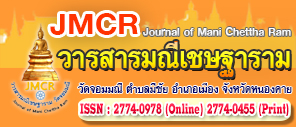TRIANGULATION IN SOCIAL SCIENCE RESEARCH
Keywords:
Triangulation, Social Science Research, Multi-Dimensional AnalysisAbstract
This article examines the concept of triangulation in social science research, a critical tool for enhancing the credibility and validity of research findings. Triangulation involves the use of multiple methods or data sources to reduce bias and broaden the scope of research outcomes. There are four main types of triangulations: Data Triangulation, Methodological Triangulation, Investigator Triangulation, and Theoretical Triangulation. This article discusses the benefits and limitations of each type and provides examples of their application in social science research to deepen analysis and confirm research results.
References
Bans-Akutey, A., and Tiimub, B.M. (2021). Triangulation in Research. Retrieved on October 14, 2024, from https://www.researchgate.net/profile/Benjamin-Tiimub-2/publication/ 355425953_Triangulation_in_Research/links/616fd0f1b148a924b8013beb/Triangulation-in-Research.pdf
Blaikie, N.W.H. (1991). A critique of the use of triangulation in social research. Quality & Quantity, 23, 115-136.
Bryman, A. (2004). Triangulation and measurement. Retrieved on October 14, 2024, from https://d1wqtxts1xzle7.cloudfront.net/33017986/Triangulation-libre.pdf
Carter, N., Bryant-Lukosius, D., DiCenso, A, Blythe, J., and Neville, A. J. (2014). The Use of Triangulation in Qualitative Research. Oncology Nursing Forum, 41(5), 545-547.
Creswell, J. W. (2013). Qualitative inquiry and research design: Choosing among five approaches (3rd ed.). Sage Publications.
Denzin, N. K. (1978). The sociological method: A sourcebook. McGraw-Hill.
Fielding, N.G., and Schreier, M. (2001). Introduction: On the Compatibility between Qualitative and Quantitative Research Methods. Forum: Qualitative Social Research.
Jick, T. D. (1979). Mixing qualitative and quantitative methods: Triangulation in action. Administrative Science Quarterly, 24(4), 602-611.
Mathison, S. (1988). Why Triangulate? Educational Researcher, 17(2), 13-17.
McFee, G. (1992). Triangulation in research: Two confusions. Educational Research, 34(3), 215-219.
Patton, M. Q. (1999). Enhancing the quality and credibility of qualitative analysis. Health Services Research.


